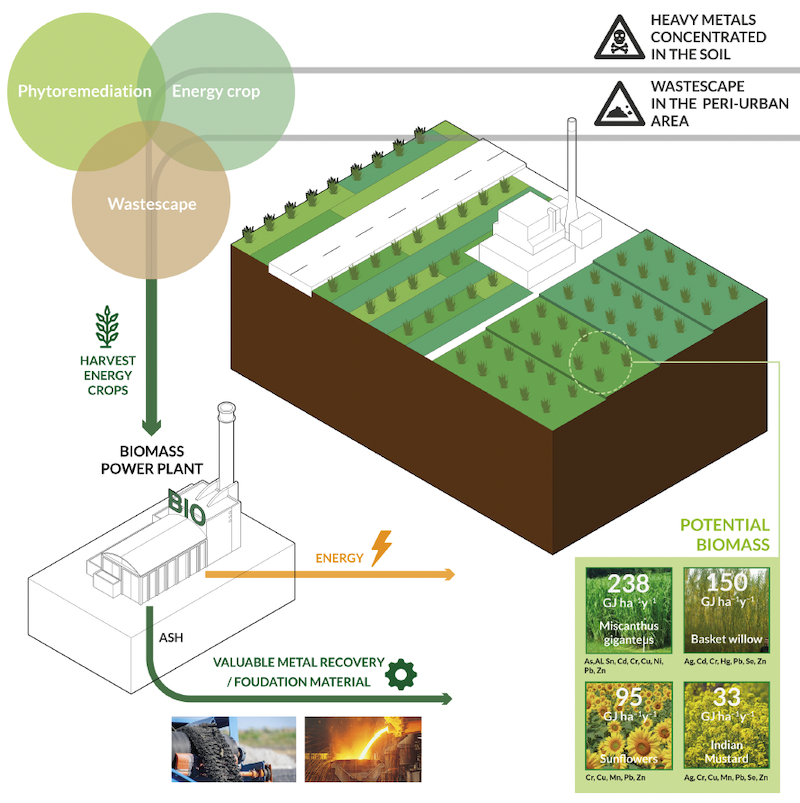Phytoremediation-Driven Energy Crops Production on Wastescapes
Geo-Design for a Circular Economy, Delft University of Technology, 2017
Anthropogenic activities have created landscapes with high levels of metal and metalloid element soil contamination. Sites with high levels of contaminants pose a human health risk through direct contact, inhalation, or consumption due to infiltration to groundwater aquifers (Nriagu et al. 1988). Additionally, negative impacts also occur to the local ecosystem, through changes to soil chemistry, eradication of microorganisms, or biomagnification. We will use the term “wastescape” to describe these landscapes that have been contaminated and abandoned.
The ideal solution for dealing with toxic metalliferous soils within wastescapes would be to convert the wastes into useful by-products or energy. Doing so creates the opportunity to provide economic, environmental, and social benefit to the producers and consumers of the waste. Through the valorization of waste, systematic leakage and negative externalities can be minimized. Such actions are crucial when combined with the realities of resource depletion, brought about by the fact that many of the earth’s resources are finite. This manner of system operation is often defined as circular, and stands apart from the antiquated linear industrial and economic systems that operate on the idea that there are no boundaries to our ability to extract, consume, and dispose of everything we produce.
Phytoremediation offers a low cost solar energy driven means to extracting the contaminants in soil and water through the use of specialized plants (hyperaccumulators) that naturally extract metals (Ali, et al. 2013)(Wan, et al. 2016). Through the application of phytoremediation, wastescapes can be improved in a way that serves the triple bottom line of people, planet, profit. Fenced off and derelict sites can be landscaped into attractive natural areas. The phytoremediators over time improves the soil and water by removing contaminates. Lastly, the phytoremediators are harvestable for production of sustainable energy and metals or foundational materials, such as concrete reagents(Jiang, et al. 2015)(Pidlisnyuk, et al. 2014). Bio-ore mining is possible when the concentration of metals in the remediating plants is high, the cost for extracting the metal from the plant is low, and the metal’s market value is high.

